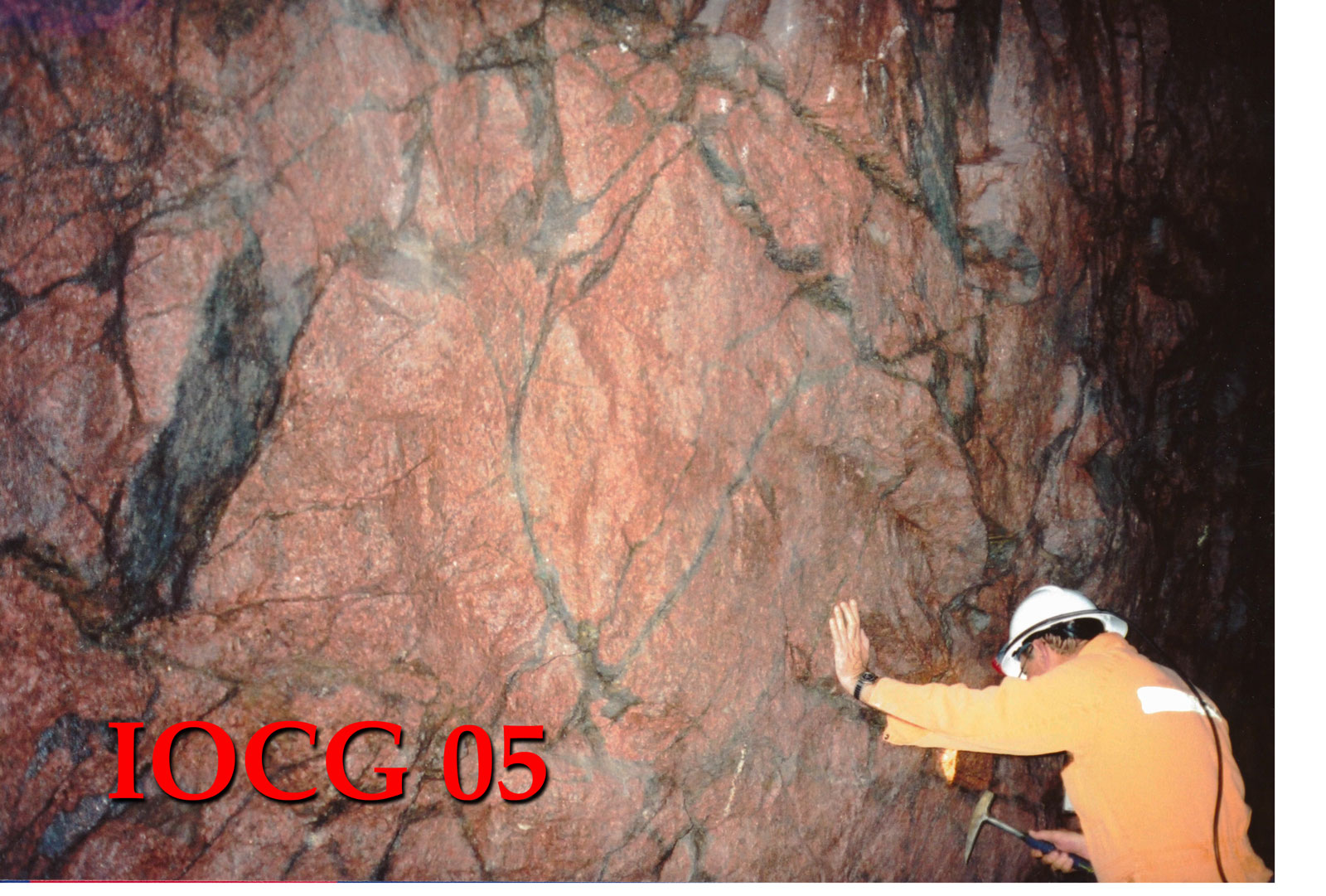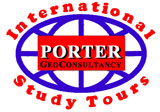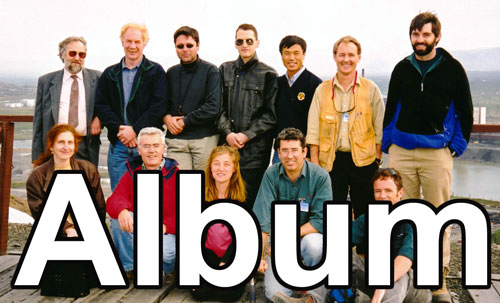Porter GeoConsultancy continued our International Study Tour series of professional development courses by visiting a representative selection of what were then the most significant iron oxide copper-gold (±uranium) deposits in Australia.

The visits were supported by field workshops and seminars led by renowned experts. Drill core from eleven other IOCG deposits and significant occurrences was also studied.

The tour started in Adelaide, South Australia on the evening of Sunday 21 November, visiting deposits across both South Australia and Queensland, and ended in Mount Isa, north-west Queensland, Australia, on the morning of Saturday 26 November 2005.

The tour took in deposits in remote locations across the continent, separated by long distances, best traversed using charter aircraft to avoid long drives and travel by more circuitous commercial air routes.

Most participants took the full tour, although some took either the South Australian or Queensland segments only, as suited their availability and interest.

 - See who went and what they saw - See who went and what they saw
|

The deposits visited, and workshops conducted were as follows:

South Australia

 Adelaide Workshop & Drill Core - a full day workshop provided background and context to the deposits to be visited. It covered the regional to local scale tectonic, geologic and metallogenic setting, and alteration patterns associated with IOCG mineralisation in the Gawler Craton and adjacent Curnamona Province, including the characteristics of deposits not to be visited. Expert presenters included Sue Daly and Alan Maugher from PIRSA Minerals (the South Australian State Geological Survey), Dr Roger Skirrow of GeoScience Australia (the Australian Commonwealth Geological Survey) and representatives of Teck Cominco. The group then had the opportunity to study drill core at the PIRSA Drill Core Storage Facility. This core was from six significant IOCG occurrences/deposits in the Mount Woods Inlier, the Stuart Shelf and the Moonta-Wallaroo region, all in the Gawler Craton, and others of the Curnamona Province. All were deposits/prospects additional to those visited, and included the major IOCG intersection in the recent discovery hole at the Carrapateena Prospect, south of Olympic Dam ..... Monday 21 November, 2005.
Adelaide Workshop & Drill Core - a full day workshop provided background and context to the deposits to be visited. It covered the regional to local scale tectonic, geologic and metallogenic setting, and alteration patterns associated with IOCG mineralisation in the Gawler Craton and adjacent Curnamona Province, including the characteristics of deposits not to be visited. Expert presenters included Sue Daly and Alan Maugher from PIRSA Minerals (the South Australian State Geological Survey), Dr Roger Skirrow of GeoScience Australia (the Australian Commonwealth Geological Survey) and representatives of Teck Cominco. The group then had the opportunity to study drill core at the PIRSA Drill Core Storage Facility. This core was from six significant IOCG occurrences/deposits in the Mount Woods Inlier, the Stuart Shelf and the Moonta-Wallaroo region, all in the Gawler Craton, and others of the Curnamona Province. All were deposits/prospects additional to those visited, and included the major IOCG intersection in the recent discovery hole at the Carrapateena Prospect, south of Olympic Dam ..... Monday 21 November, 2005.

 Olympic Dam
Olympic Dam, a giant, hematite altered, copper-gold-silver-uranium(-REE) ore deposit located on the eastern margin of the current Gawler Craton in northern SA., ~560 km NNW of Adelaide. It is hosted within the brecciated, ~1590 Ma, Hiltaba Suite Roxby Downs Granite, and an overlying, broadly coeval, volcaniclastic sequence. It forms a thick, relatively flat lying, undulose, tabular resource dominated by chalcocite and bornite, near the top of a downward tapering, hematite/magnetite altered, more weakly, mainly chalcopyrite-pyrite mineralised, granitoid breccia complex. The main resource lies below a Neoproterozoic unconformity at a depth of >300 m and covers an area of ~6 x 3 km, with a vertical extent that generally extends no more than 800 m below the unconformity, except in the southeastern segment where it has been tilted and down-faulted to depths of as much as 2 km or more below that basement surface
..... Tuesday 22 November, 2005.

 Prominent Hill
Prominent Hill, ~150 km north-west of Olympic Dam in northern SA., hosted within a sedimentary breccia of the metamorphosed volcano-sedimentary succession of the Palaeoproterozoic, ~1750 Ma Wallaroo Group, but also cutting unconformably overlying volcanic rocks, interpreted to be equivalents of the 1590 Ma Gawler Range Volcanics/Hiltaba Suite. Mineralisation occurs as steeply dipping, thick, conformable, tabular bodies of mineralised and hematite altered sedimentary breccia;
..... Wednesday 23 November, 2005.
 Northwest Queensland
Northwest Queensland

 Cloncurry Workshop
Cloncurry Workshop - a day and a half long field, drill core and classroom workshop was held in the Cloncurry Terrane of north-west Queensland. It was led by Dr Patrick Williams of James Cook University (Townsville, Australia), an internationally known expert on IOCG deposits, particularly those of the Cloncurry Terrane. He addressed the setting and characteristics of these deposits in an intitial classroom session, before going into the field to study IOCG mineralisation, local and regional alteration, and lithologies, both in outcrop and in drill core from the E1, Monakoff and Great Australia IOCG deposits of Exco Resources. On the following day, after the Ernest Henry visit, a field traverse was undertaken to study the regionally altered exposures and equivalent outcropping magnetite mineralisation at the nearby Mount Fort Constantine, while core was examined from the Universal Resources Little Eva deposit, supported by a presentation on its geology and mineralisation
..... Thursday 24 and Friday 25 November, 2005.

 Ernest Henry
Ernest Henry, which is located ~35 km NE of Cloncurry and 150 km east of Mt Isa in north-west Queensland. It is hosted by Palaeoproterozoic 1760 to 1660 Ma silici-clastic metasedimentary and metavolcanic rocks of the Mount Isa Eastern Succession, that were intruded by the 1540 to 1500 Ma, A-type Williams and Naraku granite batholiths, interpreted to be temporally coeval with IOCG mineralisation. Magnetite-chalcopyrite-bornite mineralisation is controlled by a pipe-like zone of dilation and brecciation within K-feldspar altered metavolcanic rocks. The to 300 to 500 m diameter breccia pipe plunges at ~45° to the SSE, nested between two northeast trending, ductile, reverse shear zones
..... Friday 25 November, 2005.

The tour was organised, managed and escorted by Mike Porter of Porter GeoConsultancy Pty Limited. See the photo album, linked above, for more detail.
 Image above:
Image above: brecciated Roxby Downs Granite, underground at Olympic Dam.














